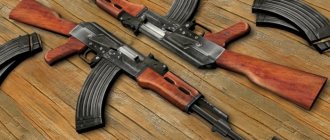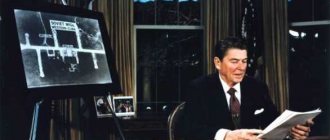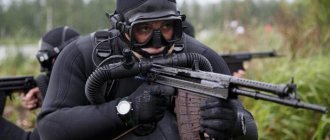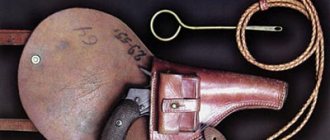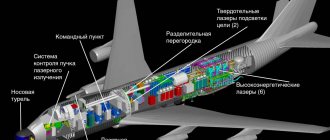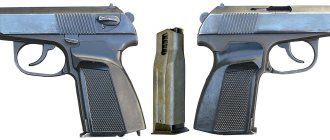The German P08 (or "P'08" or "Luger") pistol was one of the most famous German pistols of World War II. In fact, its origins date back to before the First World War, when the pistol was originally created by Hugo Borchardt.
Only after some time in the life of this weapon the name Luger was reliably attached to it. In these terms, the Luger designation can sometimes be misleading, although it is true to some extent. Serial samples of P08 pistols were developed for the 7.65 mm cartridge caliber and began to be used by the Swiss army by the beginning of the 21st century.
History of creation and production
0
The Luger pistol was a talented design modification of the Borchardt pistol, which is why until 1904 in European countries it was called the Borchardt-Luger pistol. Hugo Borchardt and Georg Luger were colleagues at the German arms firm Ludwig Loewe & Co. in Karlsruhe, where Georg Luger was fine-tuning a self-loading pistol.
Then, in 1896, Georg Luger headed a group of designers at DWM and began to carry out all the work independently. In 1898, Luger presented a sample of his 7.65 mm pistol with a barrel length of 122 mm, under the name Versuchsmodelle III (experimental model no. 3), to the Swiss government for purchase. Tests of this weapon took place in 1899; on May 4, 1900, by parliamentary decree, the pistol was adopted by the Swiss army under the name Pistole, Ordonnanz 1900, System Borchardt-Luger. DWM has committed to producing 3,000 pistols of this system for the Swiss army. After this, 7.65 mm Luger pistols entered service with a number of other countries; they were purchased by Brazil, Holland, Portugal, Russia and Turkey. In 1902, 1,000 Model 1900 Luger pistols were purchased by the US government for testing by the armed forces. In the summer of 1902, competitive tests began in Germany in the vicinity of Berlin to select and adopt a self-loading pistol for the Kaiser's army. They included: 7.65 mm Borchardt C-93 pistol, 7.65 mm Borchardt-Luger M.1900 pistol, 7.63 mm Mannlicher M.1900 pistol, 9 mm Mars pistol, 7.63 -mm Schwarzlose M.1893 “Standard” pistol, 9-mm FN Browning M1903 pistol and 7.63-mm Mauser C-96 pistol. The tests took quite a long time: only by 1904 was the winner announced - the modified Borchardt-Luger M.1900 pistol. In 1903, during testing, the caliber of the weapon was changed, since in 1902 a more powerful 9x19 mm cylindrical pistol cartridge with smokeless powder was developed, converted from a 7.65 mm “bottle” cartridge. On December 12, 1904, the 9-mm Luger pistol Naval model 1904 of the Borchardt-Luger system was adopted by the German naval headquarters for service with the German fleet. On August 22, 1908, the 9 mm Luger pistol called P.08 (Pistole 08) was adopted by the Kaiser's army as a standard short-barreled weapon. From the start of mass production in 1908 until the end of World War I, the majority of commercial, contract and military Luger pistols were manufactured by DWM.
0
DWM factory workshop
The head of the DWM company gave the pistol the name Parabellum - from the famous Latin proverb “If you want peace, prepare for war” (from Latin - Si vis pacem, para bellum), which served as the motto of the DWM company. This is also the name given to its cartridge - 9x19 mm Parabellum. It is worth saying that DWM, after adopting the pistol in Germany, used the name “Parabellum” only for commercial pistols. In 1910, the royal arsenal in Erfurt joined the production of Luger pistols, producing pistols only for the German army. In total, about 520,000 units of this type of weapon were produced in Erfurt. After defeat in the First World War, under the terms of the Treaty of Versailles, a number of restrictions were established for Germany in the military sphere. In particular, the weapons produced were significantly limited in terms of tactical and technical characteristics. Thus, pistols could not have a barrel length of more than 100 mm and a caliber of more than 8 mm. Thus, the production of weapons was difficult. However, already in 1920, employees of the Simson arms company in the city of Suhl again continued work on the production of Luger pistols in limited quantities for the needs of the police and Reichswehr officers. In 1925, the Krieghoff company joined the production of these weapons. In the 20s - 30s, with the help of specialists from Mauser-Werke AG, the production of Lugers was resumed in Switzerland and assembly was organized in Finland. In 1922, DWM was reorganized as Berlin-Karlsruher Industrie-Werke (BKIW) and again began producing Lugers, but now most of the pistols they produced were exported to the United States, where they became known as "Lugers". In addition to the United States, Finland purchased these weapons from DWM/BKIW. Over the ten-year period from 1920 to 1930, all German companies together produced over 35,000 Luger pistols. In 1930, the management of the DWM/BKIW company came under the control of Mauser-Werke AG, and the production center was transferred to Oberndorf am Neckar. On May 1, 1930, about 800 machine tools and technological equipment were transported there from Karlsruhe. For the next five years, Lugers manufactured by Mauser still carried the DWM mark. Models produced for export were engraved with the coat of arms of the customer's country. Many models are engraved with the coat of arms of the manufacturer.
0
Example of engraving on a Luger pistol
Since 1934, the names of manufacturers have not been indicated on German small arms - only the codes of weapons manufacturing plants according to the classification of the Army Weapons Directorate have been indicated. Mauser corresponded to code S/42. Since 1930, Mauser-Werke AG continued to manufacture Luger pistols for export to the US Army. Persia ordered 3,000 R.08 and 1,000 LP.08. All Lugers had fairly high quality finishes and precise fitting of moving parts. The metal surfaces were blued, and some examples of these weapons were decorated with engraving. The cheeks of the handles were made mainly of walnut wood, with a neat fine checkering, however, pistols manufactured during World War II could have cheeks made of plastic. In the production of Luger pistols, alloy steel was used, which has increased strength and corrosion resistance. The main parts of the weapon, such as the frame, barrel, bolt, and others, were subjected to conventional heat treatment by hardening to the required hardness. At the same time, various parts were hardened to the strength they required. The parts of the trigger mechanism and the connecting axes underwent heat treatment using the method of carburization (carburization), that is, diffusion saturation of the surface layer of steel with carbon when heated in a carburizing environment. Parts processed in this way acquire their final properties after hardening and low tempering. The purpose of this treatment is to impart high hardness and wear resistance to the surface layer, increase the limit of contact endurance and the limit of bending endurance while maintaining a sufficiently viscous core - the main body of the part. The thickness of the carburized layer did not exceed one millimeter. As a result, these parts had both strength and the necessary ductility, which allowed them to constantly withstand the heaviest loads. During World War I, Parabellums were protected against corrosion by an acid oxidation process (called "rust varnish" or "rust bluing"), in which the steel is protected by a coating of oxide film, similar to rust, with a deep black color. Further, in the period between the two world wars and during the Second World War, a more progressive method of applying a protective coating was used - oxidation, which significantly saved time and money. Another type of coating used to protect the surfaces of Luger steel parts was a phosphate coating, applied by hot phosphating, used in the 1920s.
Photo of the Parabellum pistol
Shutter closed
The shutter is cocked
Partial disassembly of the Luger P.08 Parabellum pistol
Similar
AK-47 assault rifle cartridge caliber 7.62 mm.
Device. Rate of fire AK-74 assault rifle cartridge 5.45 mm caliber. Device. Rate of fire
Dragunov SVD sniper rifle caliber 7.62 mm. Device
AKS-74U assault rifle cartridge caliber 5.45 mm. Device. Weight
Mauser K96 pistol cartridge caliber 7.63 and 9 mm. Device
Pistol Walter PP / PPK cartridge caliber 7.65 and 9 mm. Device
Pistol Yarygin PYa Grach cartridge caliber 9 mm. Device
DShK machine gun cartridge caliber 12.7 mm. Device. Rate of fire
Luger pistol R.08 Parabellum cartridge caliber 9 mm. Device
Pistol PM cartridge caliber 9 mm. Rate of fire. Dimensions. Bullet speed. Sighting range
Self-loading shotgun Saiga-12 cartridge, caliber. Device
Maxim machine gun cartridge caliber 7.62 mm. Device. Weight
PPSh-41 Shpagina submachine gun cartridge caliber 7.62 mm
APS Stechkin pistol cartridge caliber 9 mm. Device
Nagan system revolver cartridge caliber 7.62 mm. Device
Kalashnikov PK machine gun and PKM cartridge caliber 7.62 mm. Device
Simonov carbine SKS-45 cartridge caliber 7.62 mm. Device
Rifles and carbines Mauser 98 caliber 7.92 mm. Device
PPS-42 and PPS-43 Sudaev submachine gun cartridge caliber 7.62 mm
Pistol Walter P38 cartridge caliber 9 mm. Device
MP-40 German submachine gun cartridge caliber 9 mm. Device
VSS Vintorez sniper rifle caliber 9 mm. Device
Submachine gun PP-91 Kedr cartridge 9 mm caliber. Device
Light machine gun RPK-74 cartridge caliber 5.45 mm. Device
Pistol Glock 17 cartridge caliber 9 mm. Device
Makarych, Izh-79-9T, MR-79-9TM, MP-80-13T traumatic pistol
AK-12 assault rifle cartridge caliber 5.45 mm. Device. Weight
Mosin rifles and carbines Three-line caliber 7.62 mm
PMM Makarov pistol modernized 12 rounds. Device
Revolver Colt Single Action Army (SAA) Peacemaker. Device
Machine gun PKP Pecheneg cartridge caliber 7.62 mm. Device
Sniper rifle VSSK Exhaust caliber 12.7 mm. Device
Beretta pistol 92 cartridge caliber 9 mm. Device
TT - Tokarev pistol cartridge caliber 7.62 mm. Device
Submachine gun PP-19 Bison cartridge caliber 9 and 7.62 mm. Device
Sniper rifle SV-98 caliber 7.62 mm. Device
Vladimirov KPV machine gun cartridge caliber 14.5 mm. Device
ASH-12 assault rifle cartridge caliber 12.7 mm. Device. Rate of fire
PSM pistol cartridge caliber 5.45 mm. Device
Pistol Colt M1911A1 cartridge caliber 45. Device
Smith-Wesson revolver Russian cartridge, caliber 10.67 mm. Device
Degtyarev DP-27 light machine gun, 7.62 mm caliber cartridge. Device
Shotgun Mossberg 500 Cartridge. Dimensions. Rate of fire. Sighting range
Thompson submachine gun cartridge caliber 11.43 mm. Device
Pistol USP Heckler und Koch cartridge, caliber. Device
Hunting carbine OSK-88 (SVT-40) caliber 7.62 mm. Device
AS Val silent automatic cartridge caliber 9 mm. Device
Submachine gun PP-19-01 Vityaz cartridge 9 mm caliber. Device
Machine gun Kord cartridge caliber 12.7 mm. Device. Weight. Sighting range
Osa - traumatic pistol cartridge, caliber. Device
AK-9 assault rifle cartridge caliber 9 mm. Device. Rate of fire
Degtyarev RPD light machine gun, 7.62 mm caliber cartridge. Device
Automatic OTs-14 Groza cartridge caliber 9 mm and 7.62 mm. Device
Czech pistol CZ-75 (modifications). Device
Browning pistol 1903 cartridge caliber 9 mm. Device
Sniper rifle OSV-96 caliber 12.7 mm. Device
FN P90 submachine gun cartridge caliber 5.7 mm. Device
Submachine gun OTs-02 Cypress cartridge caliber 9 mm. Device
Sniper rifle ASVK Kord caliber 12.7 mm. Device
Automatic AEK-971 Cartridge. Caliber. Device. Rate of fire
Steyr AUG assault rifle (A1, A2, A3) cartridge caliber 5.56 mm
AK series 100 assault rifles. Modifications. Device. Weight. Dimensions
Uzi submachine gun. Cartridge. Caliber. Rate of fire
Pistol SR1M Gyurza cartridge caliber 9 mm. Device
Pistol GSh-18 cartridge caliber 9 mm. Device
SVDK sniper rifle caliber 9.3 mm. Device
Automatic SR-3M Whirlwind cartridge caliber 9 mm. Device
Machine gun NSV-12.7 Utes cartridge, cal. Device. Weight
Kalashnikov RPK light machine gun cartridge caliber 7.62 mm. Device
Sniper rifle VSK-94 caliber 9 mm. Device
Vostok-1 (Jorge-3M) 9mm caliber traumatic pistol. Device
Degtyarev PPD submachine gun cartridge caliber 7.62 mm
English sniper rifle L96A1 cartridge, caliber
M1 Garand rifle cartridge caliber 7.62 mm. Device
Desert Eagle pistol. Device
Smith-Wesson revolver (modifications). Device
Automatic rifle HK G36 (E, K, C, KE) cartridge caliber 5.56 mm
Pistol P-96 cartridge caliber 9 mm. Device. Rate of fire
Pistol GP35 Browning High Power cartridge, caliber. Device
Assault rifle FN SCAR (L, H) cartridge caliber 5.56 and 7.62 mm
Revolver Lefoshe M1856 cartridge caliber 11 mm. Device
Submachine gun PP-90 cartridge caliber 9 mm. Device
AN-94 Abakan automatic Nikonov cartridge caliber 5.45 mm. Device
Submachine gun PP-2000 cartridge caliber 9 mm. Device
Mauser pistol HSc cartridge caliber 7.65 and 9 mm. Device
M16 automatic rifle cartridge caliber 5.56 mm. Device
Fedorov assault rifle cartridge caliber 6.5 mm. Device. Rate of fire
Pistol Baltiets cartridge caliber 7.62 mm. Device
Strizh pistol cartridge caliber 9 mm. Device. Weight. Sighting range
Browning pistol 1910 cartridge caliber 7.65 and 9 mm
Silent pistol PSS Vul cartridge caliber 7.62 mm. Device
Pistol SIG-Sauer P226 cartridge caliber 9 mm. Device
Pistol OTs-27 Berdysh cartridge caliber 7.62 mm and 9 mm. Device
AK-107 assault rifle cartridge caliber 5.45 mm. Device. Rate of fire
OTs-44 sniper rifle, caliber 12.7 mm. Device
German machine gun MG3 cartridge caliber 7.62 mm. Device
Self-loading shotgun Browning Auto-5 cartridge, caliber. Device
Submachine gun AEK-919K Kashtan cartridge caliber 9 mm. Device
PB pistol silent cartridge 9 mm caliber. Device
Pistol OTs-33 Pernach cartridge caliber 9 mm. Device
Hunting carbine KO-98 cartridge caliber 7.92 mm. Device
TK (Korovin pistol) caliber 6.35 mm. Device. Weight. Dimensions
Underwater assault rifle APS cartridge caliber 5.66 mm. Device
Pistol OTs-21 Malysh cartridge caliber 9 mm. Device
American M60 machine gun, 7.62 mm caliber cartridge. Device
MTs-116M sniper rifle, caliber 7.62 mm. Device
Automatic 9A-91 cartridge caliber 9 mm. Device. Rate of fire
Submachine gun PP-93 cartridge caliber 9 mm. Device
VAG-73 - Gerasimenko pistol. Device. Weight. Dimensions
Cordon-5 is a traumatic pistol. Device. Weight. Dimensions
Goryunov SG-43 heavy machine gun cartridge caliber 7.62 mm. Device
Webley revolver cartridge, caliber. Device. Dimensions. Weight
Machine gun AEK-999 Badger cartridge caliber 7.62 mm. Device
RP-46 machine gun, 7.62 mm caliber cartridge. Device. Rate of fire
Sniper rifle VS-8 cartridge caliber 8.6 mm. Device
Slostin machine gun cartridge caliber 7.62 mm and 14.5 mm. Device
Assault rifle Tavor TAR-21 cartridge caliber 5.56 and 5.45 mm
Submachine gun SR-2 Veresk cartridge caliber 9 mm. Device
Lancaster pistol cartridge caliber 12.1 mm. Device. Rate of fire
Submachine gun PP-90M1 cartridge caliber 9 mm. Device
Underwater pistol SPP-1M. Device. Weight. Dimensions
Traumatic pistol MP-461 Guard. Device. Weight. Dimensions
Lebel rifles and carbines are cartridgeed in 8 mm caliber. Device
Automatic A-91 cartridge caliber 7.62 mm. Device. Rate of fire
M14 automatic rifle cartridge caliber 7.62 mm. Device
Revolver Smith & Wesson Model 10 Military & Police
Automatic rifle FN FAL cartridge caliber 7.62 mm. Device
Submachine gun STEN MK 2. Device. Weight. Dimensions
Traumatic pistol IZH-78-9T Chain mail cartridge caliber 9 mm
Leader-M traumatic pistol 11.43×32T. Device. Weight. Dimensions
Ingram M10 and M11 submachine gun. Device. Weight. Dimensions
Pistol Steyr M9-A1 cartridge caliber 9 mm. Device. Weight
Pistol OTs-23 Dart cartridge caliber 5.45 mm. Device
Berthier rifles and carbines caliber 8 mm. Device
Automatic shotgun USAS-12 cartridge caliber 18.5 mm
Sniper rifle VS-121 caliber 7.62 mm. Device
Traumatic pistol MP-353 cartridge, caliber 11.43 mm
Tiss machine gun cartridge caliber 9 mm. Device. Rate of fire
Traumatic pistol MP-355 cartridge caliber 9 mm. Device
Automatic double-medium ADS cartridge caliber 5.45 mm. Device. Rate of fire
Traumatic pistol MP-81 cartridge caliber 9 mm. Device
Pistols Zastava 70 and 70(k), cartridge caliber 7.65 or 9 mm. Yugoslavia
Sniper rifle GALATZ (Galil) cartridge caliber 7.62 mm
Pistol MP-444 Bagheera cartridge caliber 9 mm. Device
Revolver Colt New Army / Navy. Device. Bullet speed. Sighting range
Type 64 is a Japanese automatic rifle. Device
Options and modifications
M.1900 is the first model of the Borchardt-Luger pistol. This model inherited one feature inherent in Borchard pistols - a small bracket on the right side of the bolt hinge. Its task was to prevent the shutter from rebounding after it was closed. In reality it was unnecessary because when the bolt hinge is closed it is slightly below the line along which the recoil force acts, and therefore any action aimed at opening the bolt only pressed the hinge further against the receiver. Important elements of the M.1900 were a safety lever blocking the receiver, which was on the left rear of the frame, and a spring ejector, which was located on the flat top surface of the bolt.
0
Borchardt-Luger M.1900 pistol, left view
M.1902 - further development of M.1900. This model was created for the 9x19 mm Parabellum cartridge, as a result of which the barrel had to be made somewhat thicker and shorter than that of the previous model. Barrel length 102 mm. The bolt and magazine were also slightly modified. The number of rifling in the barrel was increased from four to six, and the dimensions of the frame and receiver became the same. In the final version of the M.1902, the frame, receiver and threaded barrel bushing were shortened by approximately 2 mm. M.1904 - became the first mass model of the Luger pistol. The first purchase of this weapon occurred after the German Navy adopted the “Self-loading pistol model 1904” (German: Selbstlade-Pistole Mod.1904) with a barrel length of 147 mm, later known as the “Naval Model”.
0
Pistol Luger M.1904, left view
The 1904 Model introduced innovations that would become standard on all subsequent Luger pistols. The conventional spring ejector has been replaced by a new type of ejector with a vertical tooth. The ejector is combined with an indicator of the presence of a cartridge in the chamber. The cartridge in the chamber raises the ejector upward. This model has a reversible sight at a distance of 100 and 200 m. At the bottom of the back of the handle there is a groove for attaching a holster-butt. Caliber 9 mm, length 262 mm, barrel length 147 mm, weight 915 grams, muzzle velocity 350 m/s. From 1905 to 1918, DWM manufactured 81,250 M.1904 pistols for the German Navy. M.1906 - in 1906 the pistol was modernized. The leaf return spring in the handle was replaced with a twisted, cylindrical one. The fuse design has also been changed; he himself was moved down and began to lock the sear. The top of the bolt was now semi-circular, the hinge grips were flat-faced with diamond-shaped checkering, and the anti-bounce bracket was removed. M.1906 was manufactured in two versions - chambered for 7.65 mm and 9 mm.
0
Luger M.1906 with an under-barrel flashlight. Such pistols were in service with the Imperial Security Service (RSD) during the Second World War.
M.1908 - this model differs from M.1906 in the absence of an automatic fuse. The M.1908 was most often called simply Pistole 08, or P.08. Like the 1906 model pistol, it has a cylindrical coiled return spring and an extractor, which is combined with an indicator of the presence of a cartridge in the chamber. With all the changes, the new “Marine Model of 1904” was produced with the same name. In total, until 1918, the DWM arms company produced 908,275 P.08 for arming the army and 1,500 pistols for civilian purposes. In Erfurt, from 1911 to 1918, 663,600 units were produced.
0
Luger P.08, left view
LP.08 - the so-called “Artillery Model” adopted on June 3, 1913. The pistol is intended to arm crews of field artillery guns and non-commissioned officers of machine gun teams. Designed for shooting up to 800 m with an attached wooden holster-butt. In 1917, engineer Leer developed a 32-cartridge drum magazine for it (German: Trommelmagazin 08). This magazine was subsequently used in the MP 18.I submachine gun. During the First World War, about 198,000 Artillery Model pistols were produced for the German army.
0
Pistol LP.08, left view
In addition to the standard version P.08, in the early 1930s. Mauser-Werke AG has also begun production of a special version with an expansion type muffler. Special services such as the SD, Gestapo and military intelligence, the Abwehr, began to receive these weapons.
Luger artillery
The Lange P08 pistol, or simply "artillery" Luger, was a pistol carbine for use by German Army artillerymen as a sort of early personal defensive weapon. This pistol could fire accurately up to 800 meters.
Its feature was an elongated barrel and butt, and was also sometimes equipped with a drum magazine for 32 rounds. Early release LP08s had micrometric adjustable front and rear sights.
It was also available in various commercial carbine versions with even longer barrels. In total, during the First World War, about 195,000 units of these weapons were produced for the German army.
Captured Lugers were highly prized by Allied soldiers during both World Wars as spoils of war.
However, during World War II, German soldiers knew about this and used Lugers as "bait" for anti-personnel mines or hidden booby traps.
The bomb exploded during an attempt to pick up an allegedly accidentally thrown pistol. This tactic was common enough that it made seasoned Allied soldiers deeply suspicious of the apparently abandoned Luger they had discovered.
Design and operating principle
According to the principle of automation, the Parabellum pistol is a type of automatic weapon using barrel recoil (short stroke). The barrel bore is locked using a system of hinged levers that are in the normal position and when firing a shot in the “dead center” position. In this state, folding of the levers under the influence of the linear pressure of the bolt when fired is excluded. The striker-type impact mechanism is located in the bolt. It consists of a striker with a striker, on which there is a combat cock, and a mainspring. The trigger mechanism is located in the receiver and frame of the pistol and allows only single fire. It consists of a trigger lever with a sear and a disconnector, a transfer (crank) lever and a trigger with a spring. The transfer (crank) lever is located in the trigger cover; the lower knee of the lever is connected to the trigger, and the upper knee is connected to the disconnector.
0
Shutter closed
0
The shutter is cocked
0
Incomplete disassembly
The trigger lever is located on the left wall of the receiver; when fired, it moves back along with the receiver. When the trigger lever moves away, the disconnector comes out from under the upper bend of the transmission lever. In this case, the connection between the trigger and the trigger lever is broken, and therefore the firing pin is kept cocked after each shot. In case of misfire, you can cock the firing pin without reloading. To do this, you need to pull the lever rollers before the barrel begins to move and release. When fired, the barrel comes off first, then the bolt. If you grab the rollers and pull, the levers will move out of the dead center position and the shutter will open first. At the same time, the mainspring is compressed and the firing pin is cocked onto the sear. If you want to make a smooth release of the firing pin, then pull the rollers before the barrel begins to move, and holding the bolt with them, you need to press the trigger and smoothly release the bolt to its original position. After firing, the barrel and receiver are returned forward by a return mechanism, which consists of a return spring with a guide rod (located in the pistol grip) and an earring. The upper end of the earring is hingedly connected to the connecting rod, and its lower end is connected by horns to the fork of the return spring rod. On the left side of the frame there is a safety device against accidental shots. When the safety lever is lowered down, the trigger lever is locked and at the same time it becomes impossible to retract the barrel with the receiver. Models of the pistol produced before 1908 had an automatic safety that was turned off when the handle was grasped, but later it was abandoned for safety reasons. It was the reason for neglecting to set the manual safety and, as a result, the possibility of an accidental shot when the pistol was dropped.
0
Pistole 08 Poster (click on image to enlarge)
The pistol magazine is box-shaped, single-row, designed for 8 rounds (the drum magazine holds 32 rounds in the “artillery” version, is inserted like a box magazine). The magazine release is located on the left side of the handle at the base of the trigger guard. The pistol grip has a comfortable grip, which ensures comfortable aiming. The Luger pistol is distinguished by an unusually large grip angle compared to modern pistols - at an angle of 120°. This promotes accurate shooting “offhand” and reduces the toss of the barrel when shooting while aiming due to a decrease in the angular momentum arm. The cartridge case is extracted by an ejector located in the bolt. If there is a cartridge or cartridge case in the chamber, the inscription GELADEN is visible on the left wall of the ejector - loaded. The reflection of the cartridge case is made by a reflector fixed in the receiver. There is a bolt stop in the frame of the pistol that holds the bolt in the rear position after all the cartridges have been used up. Most models have a fixed sight and are designed for shooting at a range of up to 50 m.
Birth of a legend
In the history of handguns there are many examples of successful creation of military equipment. One such example is the Luger pistol, which appeared at the beginning of the 20th century. This weapon can rightfully be called legendary, a living symbol of high performance culture and impeccable quality. Just one glance at the drawings of the Parabellum pistol is enough to appreciate the depth of inventiveness of the design idea and the creative approach shown in creating weapons.
This pistol, like many other things created in Germany in the field of military equipment and weapons, was ahead of its time. It's not just about the high combat qualities of the weapon. The design of the Parabellum pistol itself is of interest. This product fully reflects the Germans' commitment to carefully and scrupulously treating every detail. Even despite the fact that the constructively created equipment looks complex and expensive to produce. As practice has shown, the technological and design complexity of mechanisms sometimes produces excellent results. Provides the created sample with the necessary safety margin and a high technological resource.
And it all started banal and simple. First, the Hugo Borchardt pistol was born. A successful copy was made from it. The author of the idea was Borchardt's student Georg Luger, who modernized his mentor's invention and introduced a number of significant innovations into the design of the pistol. The result exceeded all expectations, making the Luger-Borchardt pistol model one of the most advanced weapon systems.
Layouts
Military and civilians immediately appreciated the new weapon, which was not only distinguished by its beautiful and elegant shape, but also had excellent ballistic and firing characteristics. This pistol is a pleasure to shoot. Pleasant to the touch, the anatomical shape of the handle ensures a comfortable grip. The trigger mechanism, unlike other types of handguns, was distinguished by its softness and smooth action. These qualities had a positive effect on the combat characteristics of the pistol, which had a high rate of fire and high combat accuracy.
Flaws
Lots of complex parts. Even the trigger has an intricate crescent shape; The design does not allow closing the locking levers, protecting them from dirt or sand getting into the mechanism, which can cause a delay if a lot of dirt gets into the mechanism; Delays when using cartridges with non-ogive bullets; For reliable operation of the weapon, it is necessary to use only high-quality cartridges; You cannot use cartridges with an increased charge of gunpowder for firing to avoid damaging the weapon; When shooting from the stomach, cartridges often fly into the shooter’s face; If dropped onto a hard surface, a spontaneous discharge may occur.
Like other weapons of the early 20th century, the Luger was not highly technologically advanced. During the period of greatest production intensity, Mauser-Werke AG spent 12.5 man-hours on the production of one Luger; its production was quite labor-intensive. With the mass of the pistol itself being 0.87 kg, 6.1 kg of metal was required to produce it. During manufacturing, 778 separate operations were performed, including 642 operations on machine tools and 136 manually.
0
In 1939, the production cost of one P.08 pistol by Mauser-Werke AG was 11.5 Reichsmarks, and the magazine for it was 3.15 Reichsmarks. The cost of a complete Luger pistol with two magazines was 17.8 Reichsmarks; the Mauser sold to the Wehrmacht more expensively - for 32 Reichsmarks, while the Mauser 98K rifle cost 70 Reichsmarks, and the MG 34 machine gun (itself expensive and replaced for this reason by MG 42) cost the Wehrmacht 300 Reichsmarks.
Technical characteristics of Gletcher Luger Parabellum
| Characteristic | Parameter |
| Power | 3 J |
| Ammunition | steel balls 4.5 mm |
| Speed | 100 m/s |
| Materials | The bolt and frame are made of metal alloy, the barrel is made of brass, the magazine and some parts in the mechanism are made of steel, and the linings are made of plastic |
| Magazine capacity | The magazine is full-size and holds 21 rounds, and has a compartment for a gas cylinder. |
| Puncture system | To puncture the gas cylinder there is a hidden screw with a key hole. |
| Dimensions | Length 22 cm, width – 140 cm, thickness – 3.5 cm. |
| Weight | 856 grams |
Operation and combat use
The pistol was actively used in World War II. R.08 served as a design model for such pistols as the Japanese Nambu model 1914, as well as the Finnish Lahti L-35. Third Reich - until 1939, it was the main standard personal weapon of officers and non-commissioned officers of the Wehrmacht, later it was used by privates and non-commissioned officers (who were entitled to pistols) as weapons of a limited standard, as well as in technical branches of the military, police and troops SS.
0
A Luftwaffe non-commissioned officer fires a Parabellum R.08 pistol. France. 1942
Switzerland - in 1900, the M.1900 pistol was adopted for service. Bulgaria - in 1900, the M.1900 pistol was adopted for service; in the mid-1900s, 1,250 units were purchased. M.1906 pistols; in 1912, the M.1908 pistol was adopted by the army. Great Britain - in service with special forces.
0
British commandos on training
Spain - used during the Spanish Civil War. China - in service until 1949. Latvia - purchased in the 1930s (853 units). Netherlands - in the period from 1920 to 1930, 3820 units. delivered to Holland and 1484 pcs. - Dutch East Indies, supplies continued into the 1930s for the Dutch and Dutch East Indies navies. Norway - some quantities were purchased. Poland - was adopted. Romania - adopted by the army before the start of World War II USSR - pistols were used by the Red Army during the civil war; in September 1929, an agreement was concluded under which about 300 pistols were supplied from the Weimar Republic, their assembly was carried out at the Sestroretsk arms factory. Captured pistols were used during the Great Patriotic War.
0
USA - The Luger has been adopted as a limited standard weapon for police and some categories of military personnel. Finland - M.1908 pistols have been used since 1918; Also, in 1922-1929, at least 8 thousand 7.65 mm M.1902 pistols were purchased, which entered service under the name 7.65 pist/23.
0
A Finnish soldier inspects a P.08 pistol
France - captured samples. Sweden - purchased in the 1930s (319 units). Estonia - in service from 1919 to 1940. Yugoslavia - captured samples.
Interesting fact
The history of the creation of a self-loading pistol began in 1882, when Hugo Borchardt opened his own office in Budapest. It was then that he met Ludwig Lewe, who showed great interest in the Hungarian arms industry.
In 1890, Borchardt visited his company, where the young designer Georg Luger was already working. Soon after visiting the Lewe factory, Borchardt began work on creating a self-loading pistol.
Having patented a new pistol in 1893, he, according to some sources, tried to place its production at the Liege “Fabric National” and eventually reached an agreement with the Berlin manufacturer Ludwig Lewe.
One of the company's directors decided to make a sample of Borchardt's pistol as an experiment. Work on the new pistol lasted about 18 months. Thus the first commercially viable 7.65 mm semi-automatic pistol, the Borchardt C93, was born.
Gletcher Luger Parabellum disassembly
Step-by-step instructions for disassembling the Gletcher Luger Parabellum:
- First you need to set the shutter on delay.
- After this you need to remove the magazine.
- Next, you need to move the shutter release lever down.
- Remove the Parabellum from the shutter stop.
- Remove the trigger cover.
- Remove the bolt by sliding it forward.
To assemble the weapon, you need to do the same steps in reverse order. But it is important to remember that when attaching the mechanism cover, you need to move the bolt back, and to successfully install the barrel into the grooves of the frame, you need to slightly press the metal plate inside.
